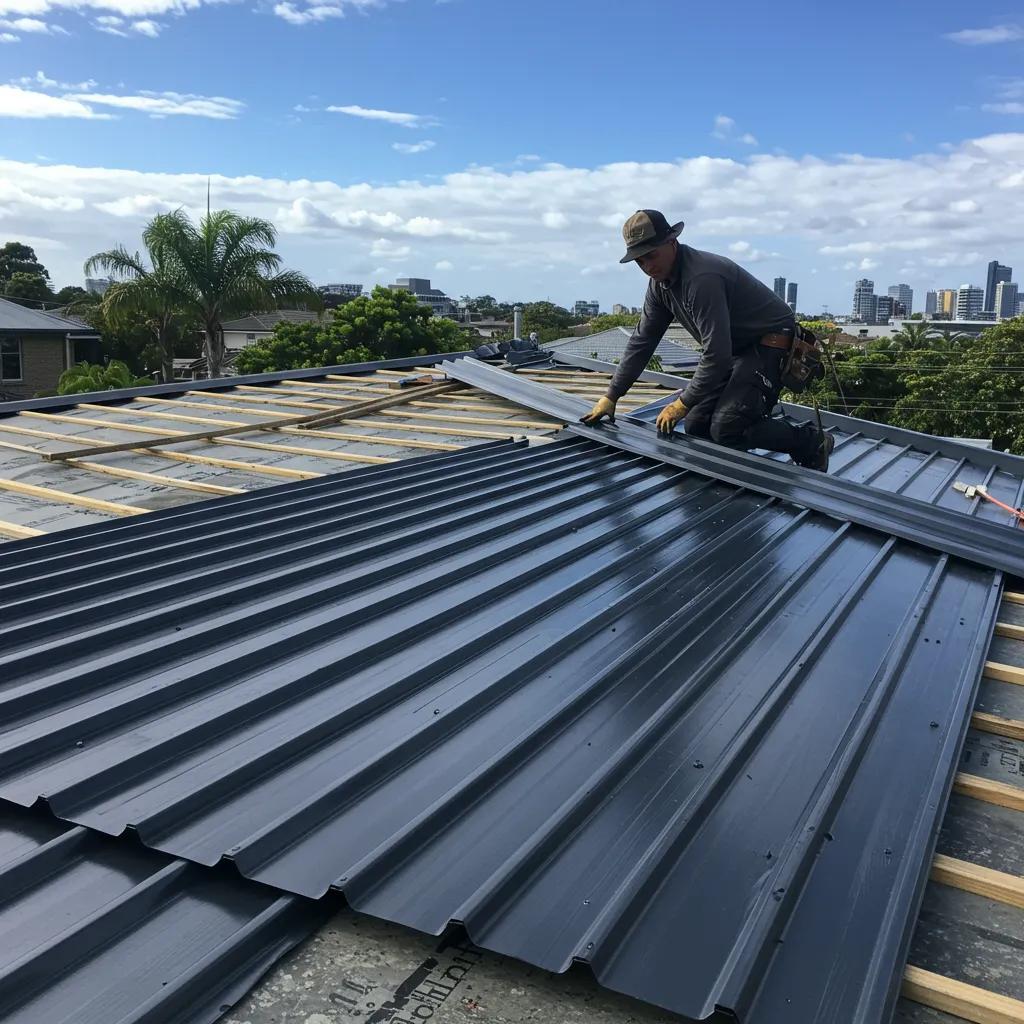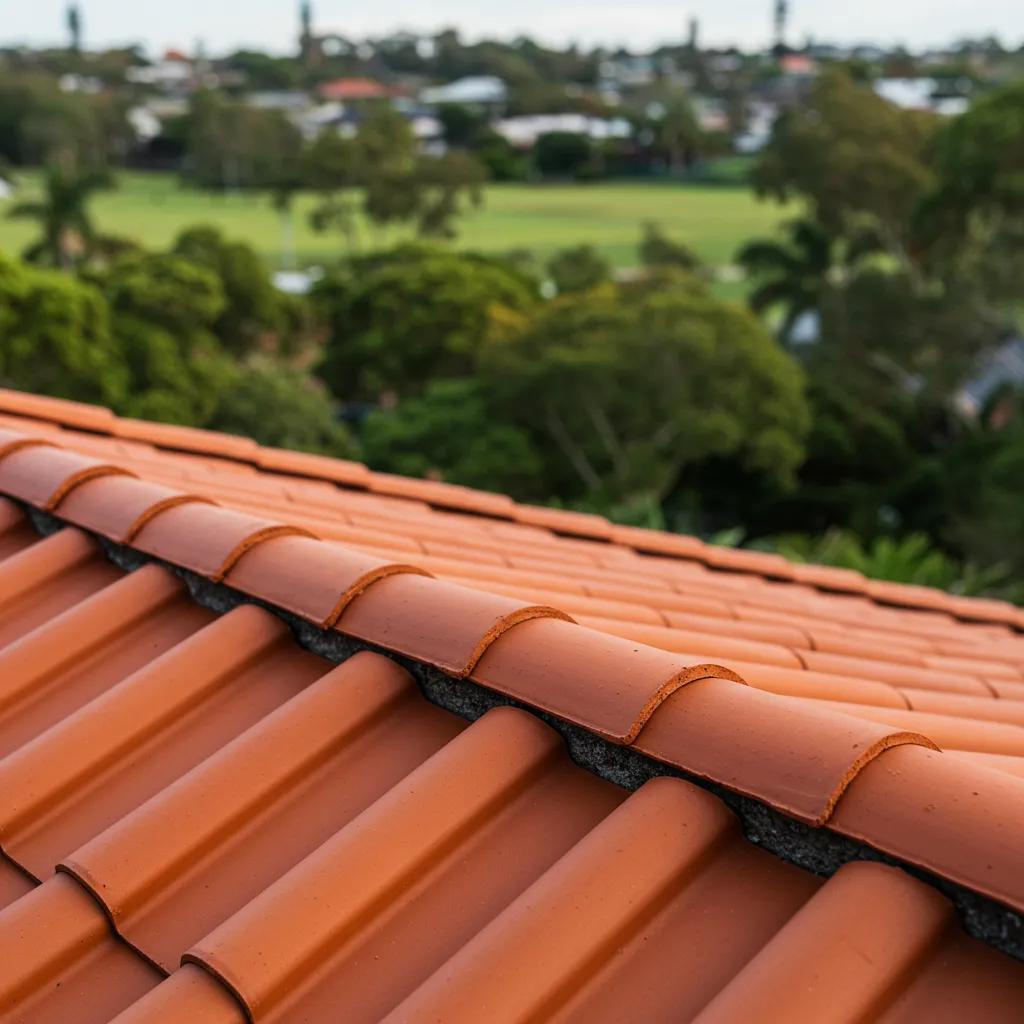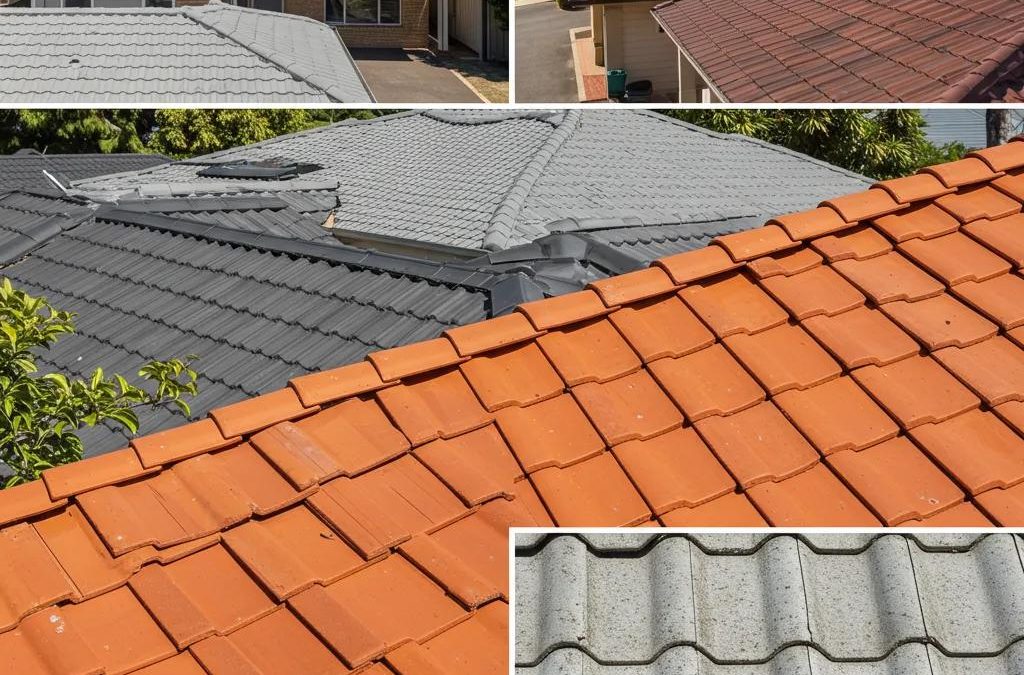Best Roofing Materials for Various Climate Conditions in Brisbane: A Homeowner’s Guide
Choosing the right roofing materials for Brisbane’s subtropical environment determines your home’s resilience, energy efficiency, and long-term value. Homeowners often struggle to balance heat reflection, storm resistance, and maintenance when evaluating roofing materials for different climates. This guide delivers clear comparisons of top options, explores how Brisbane’s unique weather affects material performance, outlines energy-saving benefits, examines cost versus lifespan, and offers practical selection and maintenance advice. Throughout, Roofing Specialist Australia supports homeowners with expert insights and professional installation recommendations tailored to local conditions.
What Are the Top Roofing Materials Suitable for Brisbane’s Climate?
Several roofing materials suit Brisbane’s hot, humid summers and storm-prone seasons by combining durability, thermal performance, and aesthetic appeal. Understanding each option’s composition and benefits ensures a roof that enhances comfort, minimises maintenance, and adds value. Below are the primary materials recommended for the Brisbane market, reflecting local performance requirements and homeowner preferences.
How Does Colorbond Steel Perform in Queensland’s Weather?

Colorbond steel is a pre-painted steel roofing system that reflects solar radiation and resists corrosion, offering exceptional durability in humid, subtropical climates. Its Thermatech technology enhances solar reflectance by up to 75%, reducing heat transfer into the home and lowering cooling costs. Homeowners benefit from a 40–50-year design life, backed by BlueScope Steel’s robust color-fast coatings that prevent fading and rust.
Thermatech Solar Reflectance Technology in Colorbond Steel
The first series was designed to study the temporal development of total solar reflectance, and the second series was designed to… Products sold in Australia since 2008 have incorporated ‘Thermatech ® solar reflectance technology’…Characterisation of microbial colonies on COLORBOND® steel substrates, Unknown Author, 2008
Key advantages:
- High corrosion resistance for coastal and suburban settings
- Superior wind uplift capacity suitable for cyclonic winds
- Wide palette of UV-stable colours to match Queenslander styles
With low maintenance requirements and professional installation by Roofing Specialist Australia, Colorbond steel delivers long-term performance and aesthetic versatility, preparing us to compare its benefits with traditional tile options.
Why Are Terracotta Tiles Ideal for Hot and Humid Climates?

Terracotta tiles consist of kiln-fired clay that provides natural thermal mass, absorbing daytime heat and releasing it at night to stabilise indoor temperatures. Their breathable surface and curved profiles promote air circulation under the roof sheet, reducing heat buildup and mould risk. Coastal salt spray and humidity have minimal impact on properly glazed terracotta, making it a reliable choice for Brisbane’s bayside suburbs.
Brisbane’s Subtropical Climate: Construction Materials and Design
A key feature of the design is the approach to Environmentally Sustainable Development (ESD) in the selection of construction materials and building by-products, as well as in their assembly. The scheme adheres to the ‘timber and tin’ typology found…Brisbane: A Subtropical Climate, Unknown Author, 2012
Terracotta tile attributes:
- Excellent fire resistance rating for bushfire-prone areas
- Natural colour durability with low UV degradation
- Lifespan exceeding 60 years under periodic inspections
The inherent insulating properties of terracotta tiles enhance year-round comfort, which leads into how concrete tiles compare in versatility and cost.
What Benefits Do Concrete Tiles Offer Brisbane Homes?
Concrete tiles are a versatile roofing option made from cement and silica, offering robust structural weight and excellent weather resistance. Their interlocking design prevents water penetration during heavy rainfall, while modern pigments ensure UV stability and colour retention. Brisbane homeowners favour concrete tiles for their competitive pricing, sound insulation, and ability to mimic premium textures like slate or terracotta.
Concrete tile performance:
- Moderate to high thermal mass for energy efficiency
- Resistance to hail impact and algae growth with surface treatments
- Cost-effective initial investment with a 30–50-year lifespan
Concrete tiles strike a balance between durability and affordability, setting the stage to assess when lighter, lower-cost asphalt shingles may be appropriate.
When Should You Consider Asphalt Shingles for Brisbane’s Climate?
Asphalt shingles consist of fibreglass mats coated with asphalt and mineral granules that provide lightweight coverage and ease of installation. Their UV-stabilised granules protect against sun damage, but prolonged exposure to Brisbane’s high ultraviolet index can accelerate brittleness over time. Regular inspections and reflective coatings extend shingle life to 20–25 years.
Asphalt shingle considerations:
- Budget-friendly option with rapid installation
- Moderate wind and hail resistance when rated appropriately
- Requires periodic cleaning to prevent moss and algae
While asphalt shingles suit renovation projects and steep-pitch designs, metal alternatives like Zincalume offer superior storm performance, which we explore next.
Are Metal Roofing Options Like Zincalume and Aluminium Suitable for Storm-Prone Areas?
Yes, metal roofing products such as Zincalume and aluminium deliver exceptional corrosion resistance and wind uplift capacity essential for Queensland storms. Zincalume combines zinc and aluminium coatings to protect against rust, while aluminium offers inherent non-corrosive properties without additional galvanised layers. Both materials reflect solar heat well, reducing indoor temperatures and supporting energy savings.
Storm-resistant metal benefits:
- High wind resistance up to cyclonic standards
- Non-combustible composition ideal for bushfire zones
- Minimal maintenance with occasional rinse-down
By comparing these steel and tile options in the table below, homeowners gain a clear overview of the leading roofing materials for Brisbane’s climate.
How Do Climate Conditions in Brisbane Affect Roofing Material Choice?
Brisbane’s subtropical climate combines hot, humid summers, heavy rainfall, tropical storms, and occasional bushfire risk, making material selection critical for structural integrity and occupant comfort. Each climate attribute imposes demands on roof durability, moisture control, UV stability, and fire resistance. Evaluating these conditions ensures a roof that protects the home and minimises maintenance costs.
What Roofing Materials Best Withstand Brisbane’s Hot and Humid Summers?
Materials with high solar reflectance and good thermal mass, such as Colorbond steel with Thermatech technology, terracotta and concrete tiles, resist heat buildup. Reflective coatings deflect up to 75% of solar radiation, while tile mass stores heat away from living spaces. Breathable underlays prevent moisture entrapment and mould growth, essential during humid months.
Which Roofs Are Most Durable Against Queensland’s Storms and High Winds?
Metal roofing systems rated for Australian wind classes 3–6, including Colorbond, Zincalume, and aluminium, deliver proven uplift resistance in cyclonic conditions. Interlocking tile profiles with enhanced clips and straps also withstand hail and gusts when installed to modern standards. Fire-safe and corrosion-resistant materials ensure long-term performance despite severe weather.
How Does Coastal Salt Air Impact Roofing Material Durability?
Salt-laden sea breezes accelerate corrosion in unprotected metal and can erode unglazed tiles. Aluminium and Zincalume steel are highly corrosion-resistant, while terracotta and concrete benefit from glazed or acrylic sealants. Regular freshwater rinses remove salt deposits, preserving coatings and reducing maintenance needs for coastal homes.
What Are the Best Roofing Options for Bushfire-Prone Areas in Brisbane?
Non-combustible materials such as Colorbond steel, Zincalume, concrete, and terracotta tiles achieve Bushfire Attack Level (BAL) ratings up to BAL-40 when installed with sealed eaves and ember guards. Their fire resistance protects against ember ignition and radiant heat, meeting Queensland Building and Construction Commission requirements for high-risk suburbs.
How Do UV Exposure and Temperature Fluctuations Influence Roof Longevity?
Prolonged UV exposure leads to colour fading, coating degradation, and material embrittlement. High-performance paint systems on steel and ceramic glazes on terracotta resist UV breakdown. Materials with low thermal expansion coefficients, such as concrete tiles, mitigate stress caused by daily temperature swings, prolonging roof life and reducing repair frequency.
Evaluating these climate factors enables a targeted choice of roofing materials that align with Brisbane’s weather demands and local building regulations.
What Are the Energy Efficiency Benefits of Different Roofing Materials in Brisbane?
Energy-efficient roofing materials reduce cooling loads, enhance comfort, and lower utility bills by reflecting solar radiation and utilising thermal mass. Selecting the right material can improve your home’s energy rating and qualify for green building incentives. Below are key efficiency mechanisms across common roofing types.
How Does Colorbond Steel’s Thermatech Technology Reduce Cooling Costs?
Colorbond steel’s Thermatech reflective pigments deflect up to 75% of solar heat, lowering roof surface temperatures by 10–20°C. This reduces air-conditioning runtime and energy consumption by up to 15% in Brisbane’s climate. The lightweight steel transfers less heat into the attic space, supporting higher overall thermal performance.
Colorbond Steel: Solar Reflectance and Climate Control
Colorbond steel palette, with an average increase of approximately 5%. When compared to similar colours with lower solar reflectance… roof solar reflectance through changing from a dark solar…Colorbond Steel with Thermatech Solar Reflectance Technology Year-Round Climate Control, Unknown Author, Unknown
Can Terracotta and Concrete Tiles Improve Home Insulation?
Yes, terracotta tiles deliver excellent thermal mass, absorbing heat during peak hours and releasing it overnight, stabilising indoor temperatures. Concrete tiles combine mass with ventilated roof spaces to create an insulating barrier. Both tile types work with reflective underlays to improve R-values, enhancing the home’s thermal envelope.
What Role Do Metal Roofs Play in Enhancing Energy Efficiency?
Reflective metal roofs, including Zincalume and aluminium, reduce heat absorption by up to 60%. When paired with insulation batts and radiant barriers, metal roofing systems can achieve superior thermal resistance. Their lightweight nature also decreases structural load and allows for additional insulation layers under the roof deck.
Are Green Roofs and Solar Tiles Viable Sustainable Options for Brisbane Homes?
Green roofs, covered with vegetation and waterproof membranes, provide natural insulation, stormwater management, and reduced urban heat island effect. Solar-integrated roofing tiles combine photovoltaic cells with durable substrates to generate renewable electricity. Government rebates in Queensland further improve payback periods, making these eco-friendly solutions increasingly accessible.
Understanding these energy efficiency benefits empowers homeowners to select materials that promote sustainability and reduce ongoing costs.
How Do Cost, Maintenance, and Lifespan Compare Among Roofing Materials for Brisbane Homes?
Balancing initial investment with long-term value is essential when choosing roofing materials. While some options have higher upfront costs, their durability and low maintenance often deliver superior return on investment. The table below summarises cost, maintenance frequency, and expected lifespan for leading materials.
What Is the Initial Investment and Long-Term Value of Colorbond Steel?
Colorbond steel’s moderate to high cost reflects its superior durability and minimal upkeep. A one-off pressure rinse and visual inspection each year preserve coatings, while resistance to rust and corrosion prevents premature failures. Over a 50-year lifecycle, maintenance costs remain low, improving overall cost-per-year metrics compared to alternate materials.
How Affordable and Durable Are Terracotta and Concrete Tiles?
Terracotta tiles command the highest initial outlay but deliver exceptional longevity and minimal atmospheric wear. Concrete tiles offer a budget-friendly alternative, combining good durability with more frequent resealing. Both materials require roof-walk inspections every five years to check for cracked tiles and sealants, ensuring optimal performance.
What Maintenance Is Required for Metal Roofing in Brisbane’s Climate?
Metal roofs benefit from low maintenance, needing a simple rinse-down annually to remove debris and salt spray, plus an inspection for coating damage. Occasional touch-up of scratches and re-fastening loose clips extend service life. This limited upkeep supports a performance rating beyond 50 years.
How Long Do Asphalt Shingles Typically Last in Hot Humid Conditions?
Asphalt shingles last around 20–25 years in Brisbane’s UV-intense environment. Periodic cleaning to remove algae, moss, and loose granules, plus reflective coating applications every 5–7 years, slow degradation. Replacement frequency and repair costs make shingles less economical over multiple cycles.
Which Roofing Materials Offer the Best Return on Investment for Brisbane Homeowners?
When assessing ROI, Colorbond steel and high-quality metal sheets lead due to their combination of lifespan, low maintenance, and potential energy savings. Terracotta and concrete tiles follow, offering long service lives and thermal benefits. Asphalt shingles may suit short-term budgets but incur more frequent repairs and replacements, reducing overall value.
How Can Brisbane Homeowners Choose the Right Roofing Material for Their Specific Needs?
Selecting the ideal roof requires considering budget, aesthetic goals, climate suitability, and maintenance capacity. A structured decision-making process ensures a balanced choice that aligns with each homeowner’s priorities and local conditions.
What Factors Should Be Considered When Selecting a Roof in Brisbane?
Homeowners should evaluate:
- Climate compatibility (heat, humidity, storms, bushfire risk)
- Budget constraints (upfront cost vs long-term value)
- Desired aesthetic style (modern, traditional, heritage)
- Maintenance tolerance (frequency and difficulty)
- Energy performance goals (insulation, reflectance)
How Do Local Micro-Climates Influence Roofing Material Choice?
Suburban areas near Moreton Bay face salt-spray corrosion, favouring aluminium or Zincalume with anti-corrosive coatings. Inland suburbs experience higher bushfire risk, requiring BAL-rated tiles or steel. Hills and valley locales may have fluctuating temperatures, making thermal mass materials beneficial. Tailoring material choice to your specific micro-climate safeguards performance and longevity.
Where Can You Find Reputable Roofing Contractors in Brisbane?
Roofing Specialist Australia serves Brisbane homeowners with certified installers, transparent quotes, and adherence to QBCC regulations. Look for contractors with relevant accreditations, positive local reviews, and strong warranties. Verification of insured workmanship and clear project timelines ensures a hassle-free experience and professional results.
What Are the Common Roofing Problems in Brisbane and How Do Materials Address Them?
Common issues include mould growth, leaks from heavy rains, hail damage, and UV-induced material fatigue. Metal roofs with sealed seams and corrosion-resistant coatings prevent leaks and erosion. Tiles with ventilated underlays and robust interlocking profiles minimise mould and water ingress. Selecting quality materials matched to local conditions reduces the likelihood of these problems.
Understanding these decision criteria empowers homeowners to choose a roof that aligns with their unique needs and Brisbane’s climatic challenges.
What Are the Latest Trends and Sustainable Roofing Options for Brisbane Homes?
The Brisbane roofing market is shifting toward eco-friendly solutions and advanced materials that enhance performance while reducing environmental impact. Homeowners increasingly adopt renewable energy, green infrastructure, and high-efficiency coatings to complement sustainable living goals.
How Is the Australian Roofing Market Evolving in Terms of Material Demand?
Current trends show a growing preference for metal roofs due to their recyclability, energy performance, and extended lifespans. Solar-ready profiles and reflective colour ranges are in higher demand, supported by government incentives for renewable energy installations. Tile manufacturers also innovate with lighter composites and integrated ventilation systems.
What Are the Benefits of Solar-Integrated Roofing Tiles in Queensland?
Solar-integrated tiles embed photovoltaic cells into ceramic or concrete substrates, generating renewable power while serving as traditional roofing. They offer a discreet aesthetic, simplified installation, and potential to offset up to 30% of household electricity consumption. Incentives and falling panel costs shorten payback periods to under a decade for many Brisbane homes.
How Do Green Roofs Contribute to Environmental Sustainability and Thermal Comfort?
Green roofs layer vegetation atop waterproof membranes, reducing heat islands, improving air quality, and managing stormwater runoff. The living cover adds insulation, lowering indoor temperatures by up to 5°C during summer peaks. While higher initial investment is required, long-term benefits include roof membrane protection and biodiversity support.
What Innovations Are Emerging in Durable and Energy-Efficient Roofing Materials?
Recent advancements include self-healing coatings that repair minor scratches via embedded microcapsules, and phase-change materials that absorb latent heat to stabilise temperature swings. Nano-ceramic paints offer ultra-low emissivity, reflecting over 80% of solar energy. These technologies position Brisbane homes to withstand evolving climate stresses more effectively.
These industry developments signal a future where roofing not only protects homes but also actively contributes to sustainability and comfort.
What Are the Best Practices for Installing and Maintaining Roofs in Brisbane’s Climate?
Optimal installation and maintenance routines ensure roofing materials deliver their full performance potential and longevity in Brisbane’s demanding environment. Adhering to manufacturer guidelines and local building codes minimises risk and reduces lifecycle costs.
How Is Colorbond Steel Installed for Maximum Durability?
Professionals set Colorbond steel on a structural deck with approved fixings and sealed lap joints to prevent water ingress. Underlay membranes and breather vents are installed to manage condensation. Fasteners are coated to match panels, and ridge cappings are sealed to block wind-driven rain. Proper installation by Roofing Specialist Australia guarantees compliance with cyclonic and bushfire standards, extending service life.
What Maintenance Schedules Ensure Longevity for Tile Roofs?
A biannual inspection checks for cracked, slipped, or missing tiles, and examines sealant integrity around penetrations. Cleaning removes debris, moss, and algae, preserving drainage and preventing water pooling. Re-glazing or resealing every 10–15 years restores water repellence and UV protection. Consistent upkeep maintains tile performance for 50+ years.
How Can Homeowners Protect Metal Roofs from Coastal Corrosion?
Freshwater rinses every 6–12 months remove salt deposits that accelerate coating degradation. Application of corrosion-inhibiting sealants to exposed edges and flashings enhances resistance. Regular inspection of fasteners and seams detects early signs of wear. These preventive measures preserve metal roofs in high-salt environments.
When Should Professional Roof Inspections Be Scheduled in Brisbane?
Schedule expert inspections:
- After severe storms to assess wind or hail damage
- Every two years for general condition checks
- Following bushfire events to inspect ember guards and seals
Are There DIY Tips for Maintaining Roofing Materials in Hot and Humid Climates?
Homeowners can clear gutters and downpipes, trim overhanging branches to reduce debris, and remove surface mould with gentle detergents. Use sun-protected gloves and soft brushes to avoid damaging coatings. Always work from stable platforms and consider professional assistance for tasks above two storeys. These routine actions safeguard roof performance between professional services.
Adhering to these installation and maintenance standards ensures your roof remains a durable, energy-efficient asset tailored to Brisbane’s climate demands.
A well-chosen roof integrates material performance, energy savings, and aesthetic harmony, ensuring your Brisbane home thrives through heat, humidity, storms, and evolving sustainability expectations. By understanding the strengths and trade-offs of Colorbond steel, terracotta, concrete, metal, and emerging technologies, you can make an informed decision that maximises comfort and value. Roofing Specialist Australia stands ready to guide you through material selection, professional installation, and ongoing care, helping you protect your investment and elevate your home’s performance.

